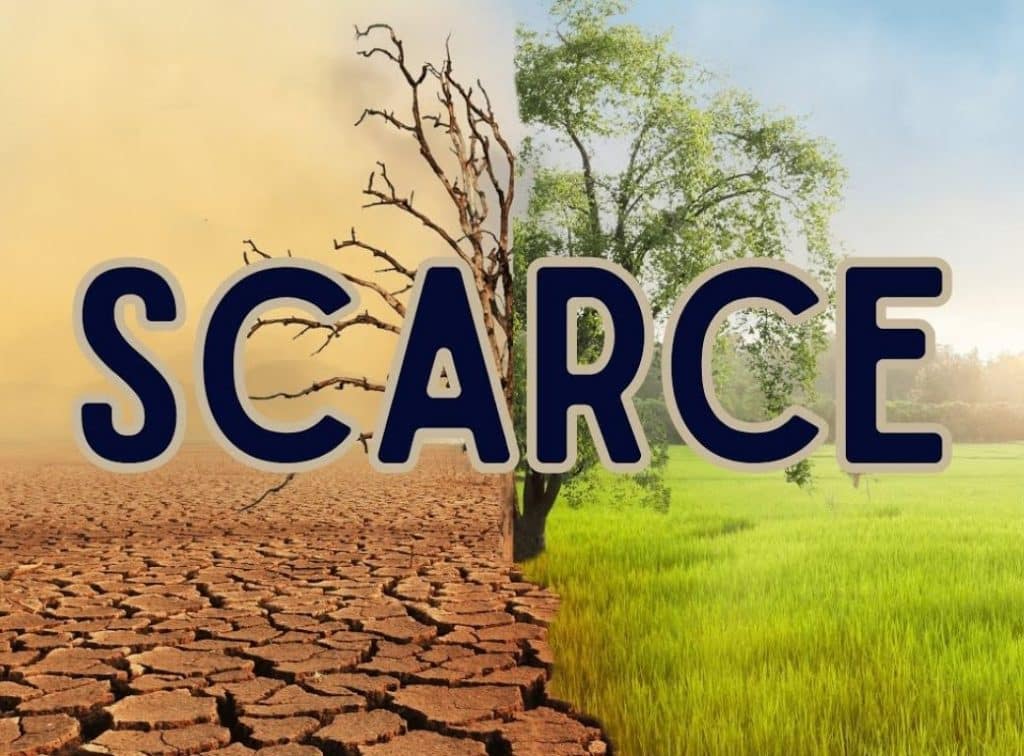Have you ever considered how the word “many” can drastically change the meaning of a sentence? While it often signifies abundance and abundance is something we naturally crave, there are times when the opposite concept of scarcity becomes crucial.
In this reading, we will explore 13 perfect Many Opposite Word, such as “limited,” “scarce,” and “paltry.” Understanding these contrasting words for many enhances your vocabulary and also enriches your communication skills in both writing and conversation.
Some
In the realm of language, the word “some” serves as a quantifier that indicates an unspecified quantity that is more than one but not an overwhelming amount. This versatility makes “some” an essential tool in everyday communication, enabling us to express uncertainty or moderation without committing to specific numbers.
For instance, when we say, “I have some apples,” it not only suggests that there are apples present but also leaves room for curiosity about how many—perhaps just two or three, rather than a whole bushel. The use of “some” enriches conversations by allowing flexibility and nuance.
It fosters a sense of inclusivity, inviting listeners to engage with the idea without feeling overwhelmed by exact figures. This can be particularly beneficial in discussions where precision isn’t necessary; instead, the focus can shift to the broader concept or experience being conveyed.
Insufficient
Insufficient resources can significantly impact various sectors, most notably in education. When schools operate with inadequate materials, such as textbooks or technology, this insufficiency often leads to subpar outcomes, limiting learning opportunities for students.
Imagine a classroom where teachers lack the tools to create engaging lessons; students may find themselves disinterested and disengaged, ultimately hindering their academic growth. This highlights the critical need for adequate funding and support to ensure that every learner has access to a rich educational experience.
In the realm of research, insufficient evidence can be equally detrimental. Researchers rely on robust data to draw credible conclusions, and when this evidence falls short, it can undermine the credibility of findings. This insufficiency affects the validity of individual studies and also casts doubt on broader scientific discourse.
Limited
The concept of “many” often evokes images of abundance and opportunity, yet its opposite, “limited,” paints a starkly different picture. Limited resources play a significant role in shaping individual choices and societal outcomes. When available resources are restricted, opportunities diminish, leading to a cycle that can stifle innovation and growth.

This limitation is not merely a personal struggle; it ripples through communities, affecting education, health care, and economic stability. In environments where options are few, creativity often takes a backseat to survival.
Individuals may find themselves making choices driven by necessity rather than aspiration, limiting their potential for exploration and discovery. The constraints imposed by limited resources can create a mindset focused on scarcity rather than abundance, hindering collective progress and reinforcing barriers to success.
Sparse
Sparse conditions often create a challenging environment for individuals and communities alike. In areas where resources are thinly distributed, the struggle to thrive becomes apparent. For instance, in a sparsely vegetated landscape, the lack of dense flora can lead to diminished biodiversity, affecting food sources and shelter for wildlife.
This scarcity impacts animals and also places stress on human populations that rely on these ecosystems for their livelihoods. Sparse conditions can catalyze innovation and resilience among communities. When faced with limited resources, people often find creative solutions to maximize what they have.
This adaptability can foster a sense of community as individuals come together to share knowledge and skills. In a world increasingly affected by climate change, understanding and addressing the implications of sparsity can empower us to build sustainable practices that benefit both our environment and society.
Minor
In the grand tapestry of life, the concept of “many” often overshadows the significance of its antonym, “minor.” While we tend to focus on the abundance of options or the multitude of choices available, it is often the minor adjustments that can catalyze remarkable transformations.
For instance, in processes or designs, even the smallest tweaks can lead to substantial improvements, underscoring the importance of paying attention to minor details. This perspective invites us to rethink our approach—what if the key to innovation lies not in a flood of ideas but in the refinement of existing ones?
Emphasizing the minor can also foster a deeper appreciation for simplicity and efficiency. In a world saturated with information and choices, the value of streamlining processes becomes evident. By honing in on minor elements, whether they be slight alterations in design or subtle shifts in strategy, we can enhance user experience and operational effectiveness.
Negligible
In the realm of discussions around impact, the term “negligible” serves as a powerful ways to say many. When resources or efforts are considered minimal, they typically signify a limited influence or significance in larger conversations.

This notion is particularly relevant in contexts such as environmental policy or community development, where the scale of intervention can determine the outcome. A single act, when deemed negligible, often loses its potential to inspire change, overshadowed by the vastness of the challenges at hand.
The concept of negligible contributions highlights a critical aspect of human behavior: our tendency to overlook small actions that can collectively lead to substantial change. In organizations, individuals may feel that their minor contributions are insignificant, yet these very actions can accumulate over time, leading to transformative results.
Single
The concept of “single” represents a singular entity or unit, often highlighting individuality or uniqueness in various contexts. In a world that frequently emphasizes collective experiences and partnerships, being single can be a liberating state of existence.
Embracing the single life empowers individuals to explore personal interests without compromise, allowing for a deep dive into hobbies, passions, and self-discovery. This period of independence offers a chance to cultivate self-awareness, making it an ideal time for reflection and growth.
The single experience can redefine societal norms surrounding relationships. It challenges the notion that fulfillment is only found in companionship, encouraging people to seek joy within themselves. By focusing on personal development, singles can build resilience and confidence, ultimately enriching their future relationships when they do choose to connect with others.
Couple
A couple represents a partnership between two individuals, often characterized by shared goals, mutual support, and emotional connection. In contrast to the concept of “many,” which implies abundance and multiplicity, a couple embodies the essence of unity and intimacy.
This singular bond allows for a deeper exploration of interpersonal dynamics, revealing how two can create a world that might feel more substantial than the sum of its parts. The beauty of a couple lies in their ability to navigate life together, facing challenges and celebrating triumphs as a cohesive unit.
Unlike groups defined by quantity, a couple thrives on quality interactions and profound understanding, showcasing that sometimes less truly is more. Their relationship can serve as a powerful reminder that meaningful connections can flourish in simplicity, transforming the notion of “many” into something singularly significant.
Scarce
Scarcity, as an opposite of many, presents a fascinating lens through which we can examine human behavior and decision-making. When resources are limited, this dynamic can create a sense of urgency, pushing individuals to act decisively.

For instance, in business, scarcity can lead to innovative solutions as teams brainstorm ways to do more with less. This heightened pressure often reveals hidden talents and fosters an environment where creativity and resourcefulness can flourish, turning constraints into opportunities.
The concept of scarcity extends beyond mere numbers; it influences our emotional responses and societal structures. When people perceive a lack of something—be it time, money, or even social connection—they may prioritize their choices differently, leading to a more focused approach in various aspects of life.
Paltry
Paltry amounts often denote a sense of insignificance or inadequacy, particularly in discussions about resources or contributions. When individuals encounter paltry rewards for their efforts—whether in the workplace, personal relationships, or community engagements—it can create an unsettling disconnect.
This stark contrast to the abundance they may have anticipated can lead to feelings of disenchantment, as aspirations clash with reality. In a world that frequently celebrates grand gestures and significant achievements, paltry offerings can feel like a disheartening reminder of what remains unfulfilled.
Such meager returns diminish motivation and can also erode trust within teams and communities. The quest for recognition and value becomes fraught with disappointment when paltry acknowledgments overshadow genuine contributions, prompting a critical reevaluation of what constitutes meaningful appreciation.
Diminutive
Diminutive, as an antonym of “many,” encapsulates the essence of simplicity and minimalism. In the natural world, small plants like mosses and miniature succulents exemplify minimalist beauty, flourishing in a variety of habitats despite their petite size.
These diminutive organisms may be overlooked, yet they play pivotal roles in their ecosystems, providing essential services such as soil stabilization and moisture retention. Their small stature allows them to thrive in environments where larger plants might struggle, proving that less can indeed be more.
Tny animals, including various types of frogs and insects, are crucial contributors to their ecosystems. The diminutive size of these creatures often belies their significant impact; for example, many insect species are vital pollinators, ensuring the continuation of plant life.
Rare
Rarity often signifies uniqueness and value, particularly in various fields such as art, nature, and economics. In the art world, rare pieces can fetch astronomical prices, not merely due to their aesthetic appeal but because they embody a story and history that cannot be replicated.

Similarly, in nature, the existence of rare species highlights the delicate balance of ecosystems; the loss of one can profoundly impact biodiversity, leading to unforeseen consequences for entire habitats. This scarcity serves as a reminder of our responsibility to protect these unique elements of our world, which often hold keys to understanding complex environmental interactions.
In economic terms, rarity can drive demand and increase perceived worth. When a product is limited in availability, consumers may feel compelled to act quickly to secure it, resulting in a frenzy that elevates its status. This phenomenon can be seen in luxury goods, where exclusivity becomes part of the brand’s allure.
Trivial
Trivial matters often go unnoticed, yet they wield a surprising influence over our daily lives. Minor issues frequently remain overlooked in the vast fabric of existence, but they can quietly influence thoughts and choices. The significance of these seemingly insignificant details lies in their power to anchor people, offering a sense of normalcy in turbulent times.
For instance, the act of brewing a morning cup of coffee or organizing a workspace might seem mundane, yet these trivial routines create a comforting rhythm that helps us navigate the chaos around us. Trivialities can serve as a lens through which we understand the larger picture.
By paying attention to minor details, we cultivate mindfulness, allowing us to appreciate the beauty in simplicity. This perspective can transform our relationship with time; instead of racing toward monumental achievements, we learn to find joy in the little victories that punctuate our days.
Conclusion
Understanding the Many Opposite Word enriches our vocabulary and enhances our communication skills. By exploring different words for many such as “paltry,” “single,” and “limited,” we gain a deeper appreciation for the nuances of language. Each antonym carries its own unique connotation and context, allowing us to express ourselves more precisely.
Whether you’re writing an essay, crafting a story, or engaging in everyday conversation, knowing these opposites can elevate your language use. So, the next time you find yourself reaching for the word “many,” consider incorporating one of its antonyms to add clarity and depth to your expression.







